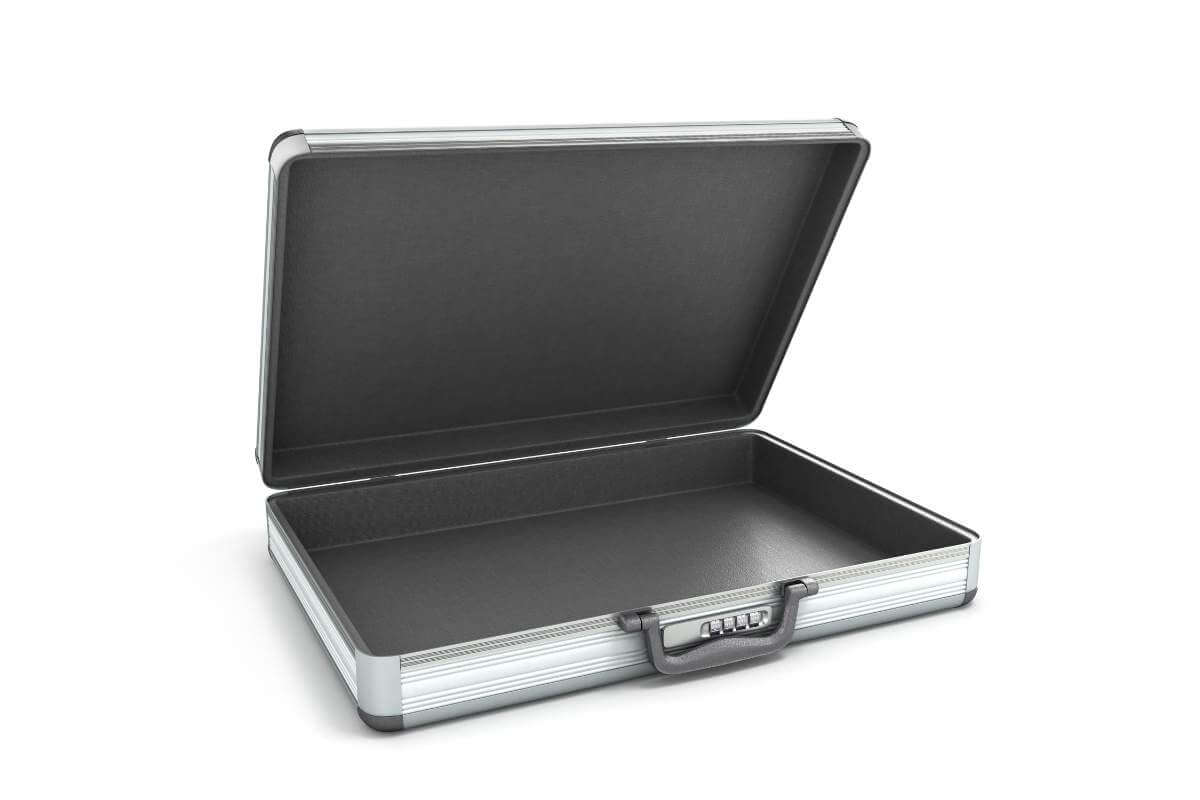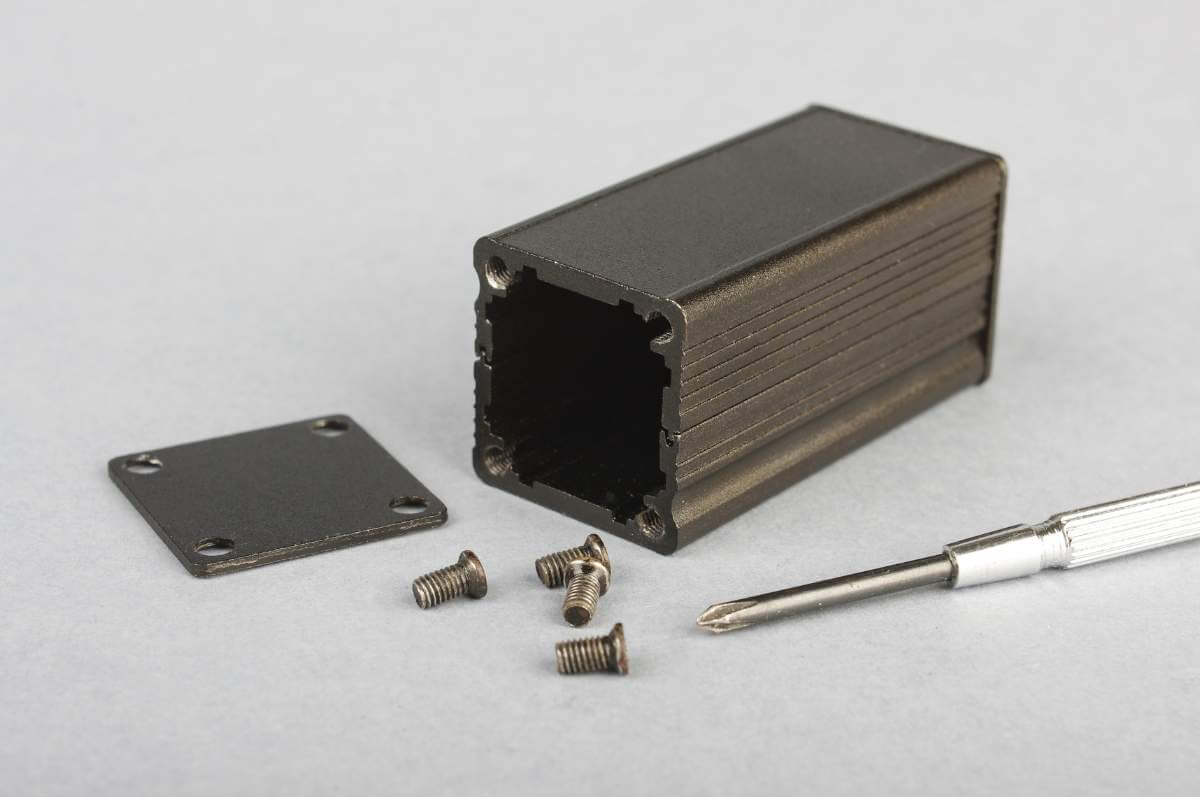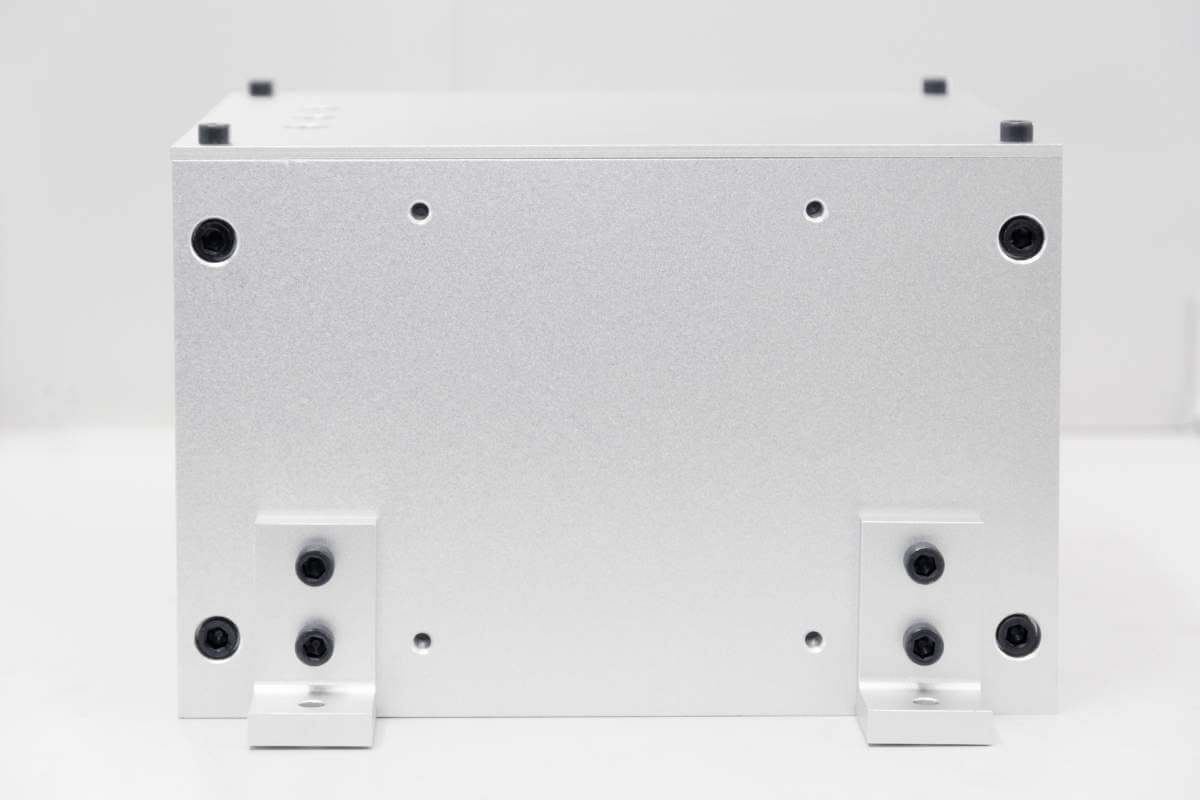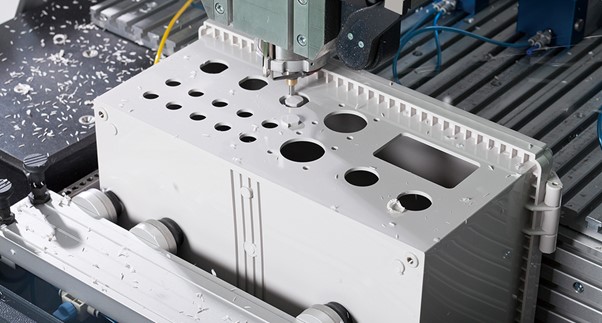Custom Machined Military Enclosures are blonging to military supplies, which have high quality requirement on both material and manufacutring. If you are involved in the electronics or computer industry then you are well aware of enclosures like PCB enclosures or electronic boxes etc. They improve the efficiency of the devices and also organize and shield inner parts from various outside factors.
While designing an electronic custom rugged military enclosure, the following aspects should be taken into consideration. One of the most important is to guarantee that the final product stays affordable at the end of the day. Subconscious choices can reduce costs including choices of material, surface finishes, and other options in the manufacturing process.
In this article, I will describe the steps necessary for designing an application-specific enclosure for an electronic product and will emphasize the goals of efficiency and cost optimization.

Custom Rugged Military Enclosures Design Process
There are several crucial phases through which the custom enclosure design is taken to achieve certain functions, appearance, and fabrication. Here’s an overview of the key phases in designing a custom fugged military enclosures:
1. Define Requirements
Start with an understanding of the need to fully specify the project scope. These are; the application for which the product is intended, the conditions it will work under, and any standards that the product has to meet. Other considerations also include size, weight, and the appearance of the equipment should also be considered.
2. Material Selection
Selecting the appropriate materials is a core factor as far as efficiency and expenses are concerned. These are aluminum, steel, and various types of plastics some of the advantages being strength, weight, and heat dissipation. To choose the materials the environment of the enclosure should be considered so that it can offer the required protection against moisture, dust, and thermal changes.
3. Conceptual Design
Once requirements and materials are established then pass on to the generation of some primitive ideas. This phase may include drawing and prototyping, to make a layman’s conceptualization of the enclosure and how it will be used. It is possible to work with engineering teams to do further tuning on these concepts and to discover other potential design problems.
4. Prototyping
The idea of creating a prototype is useful to get feedback on the design before going into large-scale production. Using the example of 3D printing, one can acknowledge that it is easy to make changes during the process of product development since the process of prototyping is very fast. Fit, form, and function are all examined with prototypes so that all parts are known to fit as planned.
5. Testing and Validation
It is possible to write with ease the algorithm that defines the necessary questions, but to come out with a valid prototype on the first try may not be possible as what is required next is critical testing of the prototype to determine how well it is going to perform. These are mechanical integrity, thermal, and environmental protection checks. If any problems exist during testing then the solution should be a design modification.
6. Final Design Adjustments
Using the results of the testing again make the necessary changes to arrive at the final look and feel of the UI/UX. This may entail changing dimensions, modifying mounting features, or changing the material to improve the performance and affect the cost.
7. Production Planning
After defining the design, it is necessary to come up with a plan for production, manufacturing processes, tools necessary, and expenses. Cooperate with manufacturers to guarantee that the production processes correspond to design requirements as well as manufacturing quality control procedures.
8. Manufacturing
After the production plan, the manufacturing phase starts with the production of the new product. This entails the crafting of the actual enclosures from the chosen material and manufacturing processes. Play is also plausible by monitoring the quality of products on the production line to ensure that the designs are not distorted.
9. Assembly and Quality Assurance
After manufacturing, the enclosures experience the assembling process and are then subjected to quality control tests. This will help to ensure that all components are well installed in the final product and that such product meets the needed standard as it is taken to the markets to be sold to the customers.
10. Feedback and Iteration
Last of all effectiveness check post-deployment with the users and the stakeholders. This information is useful in future designs and is an important source of feedback that can be used to enhance future designs.

Different Methods Used to Manufacture Custom Machined Military Enclosures
Machining is a very flexible manufacturing process frequently used in assembling customized enclosures, especially where accuracy and intricate features are important. It is a material removal process in which the workpiece is produced from a solid block or sheet of the material by cutting away unwanted material. As mentioned above, here is a brief of the basic machining strategies used in the construction of custom enclosures and their relative merits.
CNC Milling
CNC (Computer Numerical Control) milling is the process that uses state-of-the-art computer-operated machines to progressively cut material from a workpiece. This technique works well where the required cross-sectional shape is diverse, for example, cut-out slots, undercuts, or precise locating dimples. CNC milling allows for a wide variety of materials, which include different types of metals and plastics, and therefore can be used in a variety of applications, from lightweight electronics casings to heavy-duty industrial coverings. Its advantages for high-speed machining and multi-axis operation also improve design freedom and accuracy.
CNC Turning
CNC turning is used in the production of cylindrical parts where the workpiece is revolved with a cutting instrument. The process is optimal for making the CNC aluminum enclosure parts such as cylindrical casings, end covers, and threaded parts. CNC turning is precise and consistent allowing the production of close tolerances necessary for parts that need to fit well and perform their intended functions. This method also allows for fast cycle times, thus it is ideal for short and long runs.
Waterjet Cutting
Waterjet cutting takes advantage of a high-pressure water jet, which may be accompanied by abrasive granules for cutting operation for the different types of material suitable for waterjet cutting such as metals, plastics, and glass. This technique has a special feature of providing sharp edges and at the same time preventing the formation of thermal distortion, which is very useful for creating complex patterns and thin-walled products. Waterjet cutting also proves advantageous when manufacturing enclosures that require specific shapes or panels that require large contours, while still allowing manufacturers to manufacture highly detailed enclosures without adverse effects on the material.
Laser Cutting
Laser cutting entails the use of laser light to cut through a material to the desired thinness with a lot of precision. The technique is also preferred for thin material because the intricacy of the design and achieved surface smoothness is highly probable when using this technique. Some of the uses include making panels, lids, and flat parts of enclosures. Due to the high speed and accuracy of laser cutting, it can be effectively used both in the prototyping stage and in the mass production of products, which will benefit manufacturers in terms of time and quality.
CNC Routing
Routing operation uses a rotating cutting tool to cut material from the surface of a workpiece. It is frequently applied to produce flat parts like panels and covers and can accommodate any type of material, wood, plastic, or metal. It is advisable in the routing since it can be done in detail and applied to branding, labeling, and other features such as cutouts on the enclosures.
Electrical Discharge Machining (EDM)
Electrical Discharge Machining (EDM) is another nontraditional, computer-controlled machining technology that utilizes sparks to remove material from work pieces.
EDM is a non-conventional machining process that utilizes an electric spark to remove material from the electrically conductive material. This method offers the best way of developing narrow sections, undercuts, slots, and holes which would otherwise be challenging to make using regular cutting instruments. EDM is most suitable in making molds and dies on the enclosure parts, where accuracy and good surface finish are desirable.

Considerations for Precision and Other Factors in Machining Custom Enclosures
When using machining to manufacture custom enclosures, there are many precision factors and concerns involved to achieve the right outcome and functionality. Here are the key aspects to consider:
1. Tolerances
Tolerances established the level of variation in the dimensions of the enclosure. Machining with high levels of accuracy can be done to precise limits of tolerance, which is very important where the components require a high level of accuracy such as a tolerance of ± 0.001 inches or better. It is crucial to comprehend the necessary tolerances so that assembled components won’t have problems in their operation.
2. Material Choice
Machinability depends on the type of material to be processed and the precision to be achieved in the final product. For example, working with metal, such as aluminum or stainless, allows achieving very precise interferences, while when working with plastic materials, some kind of precautions must be taken to avoid deformation of the material. To achieve the best result it is crucial to select a material that will satisfy the need of performance as well as the potential of the machining method.
3. Machining Method
Precision is affected by the kind of machining method chosen. CNC milling and turning provide high accuracy of the workpiece, and water jet cutting and laser cutting provide very good edge quality although the accuracy may vary depending on the thickness and type of material being cut. This decision depends on the complexity of the design and the degree of accuracy needed to determine the best approach.
4. Tooling
The type and condition of tooling greatly affect the level of accuracy of machining. Tools that are of high quality and sharp with specific cutting edges can deliver the best standards of cutting the material with less tolerance. Great care must be taken to see that tools used in forging are well selected and maintained appropriately to retain suitable accuracy.
5. Fixturing
Correct clamping means that the workpiece is well secured in position during the machining process, and will not shift around leading to unsatisfied tolerances. Good location of fixtures ensures that there is little or no deviation from the machining process and also allows for several operations to be conducted ensuring high accuracy.
6. Machine Calibration
Machining equipment needs to be calibrated always to ensure that the desired accuracy is achieved. It is suggested that machines should be checked and adjusted to guarantee that the deviations from their ideal values are within a particular range. This is especially the case with CNC machines where even slight variations can be a large source of error in the production of the final product.
7. Surface Finish
The required surface finish thus influences the enclosure’s performance, appearance, and construction. Various types of machining operations produce surfaces of different characteristics, therefore, the required surface finish should be agreed upon at the design stage. Further finishing may be necessary for obtaining the final finish; for example, sanding, painting, electricplating, polishing, or anodizing.
8. Production Volume
A consideration of precision may be affected by the expected production volume. When it comes to mass production, the quality and accuracy of the product become very important for every part that is being produced. On the other hand, low run volumes or prototype runs may afford greater tolerance and surface finish perimeters.
9. Thermal Management
Machining operations may produce heat that in turn alters the properties of the material and its accuracy. When using flood cooling or misting, it is possible to prevent dimensional changes during the process of machining.

Choosing the Right Finish for Custom Enclosure Designs
Choosing the right finish for custom enclosures is critical since it defines the unit’s utility and appearance. This element determines the resistance, the look, and the efficiency of the product. Below are some of the above-mentioned finishing techniques and the features associated with each of them.
1. Anodizing
The anodizing process forms a chromate coating on the surface of the aluminum enclosure to act as a shield to the metal part. The next layer increases the level of corrosion protection. Its thickness usually varies between 5 and 25 microns. This also enables various colors which have an aesthetic touch to the whole structure.
2. Powder Coating
Powder coating is the process of applying a dry powder that needs heat to be applied and to dry. This leads to an external layer that is rather delicate and quite hard to penetrate. Layer thickness normally ranges from 40 to 100 microns. It is available in diverse colors and finishes and therefore has a good appearance.
3. Electroplating
Electroplating is a process of plating one metal onto a substrate by depositing a thin layer of that metal on the substrate. Some of the everyday metals are nickel and chrome. The layer thickness range is from 1 to 25 microns. This method increases the corrosion protection and gives a shiny look to the surface of the article.
4. Painting
Painting is a process of applying liquid paint onto the surface of the enclosure. This method provides a lot of opportunities to choose a color and design. Usually, the layer thickness varies from 25 to 75 microns. While it gives the building an environmental appearance, the work may need frequent touch-ups after some time.
5. Brushed Finish
A brushed finish is a surface finish obtained by using abrasives to provide a textured surface. This technique does not add extra bulk to the process. It mainly changes the surface roughness. It gives a different appearance and a little bit of protection from rust.
6. Polishing
Polishing has the effect of making the surface reflective. This process reduces thickness but does not add material to the workpiece. It also improves the aesthetic value of the enclosure. The smoothness of surfaces also enhances corrosion.
Military Specifications for Custom Enclosures
Military applications require high accuracy enclosures which should be designed and produced under the Mil-Spec requirements. These custom rugged military enclosures must have high mechanical strength, and high corrosion resistance, and have to be produced within very close tolerances. This is a good reason why thorough quality control must be applied in the entire manufacturing process to ensure that the product performs as expected. It is common for documentation to be necessary to prove conformity with material and workmanship requirements.
There are other custom plastic electronic enclosures which made by plastic injection molding or machining process, some of those plastic enclousures are used in the militery industry as well.
Key Compliance Requirements
- Material Certification: There is also a need to state the type, grade, and specification of the material to be used. Certification guarantees that all materials have the necessary performance characteristics.
- Certified Material Test Report (CMTR): This report, signed and dated, describes the material type, grade, and specifications, as well as mechanical or chemical characteristics. It is used as a document that comprises quality verifications of the material.
- Process Certification: Welding, painting, and plating processes for example are required to be certified by the National Aerospace and Defense Contractors Accreditation Program (NADCAP). The purpose of this certification is to guarantee that production processes are commensurate with the requirements of the industry in terms of quality.
- Manufacturing Origin: In this case, enclosures must be sourced from the USA, or from a country that meets strict guidelines. This is especially important regarding the different regulations governing contracting for military services.
- DFARS and FAR Compliance: You need to follow the DFARS and FAR strictly. These regulations set out policies on the procurement of defense-related products and guarantee their implementation in the chain.
- ITAR Compliance: The ITAR regulates the transfer of defense articles and technology both into and out of the United States. It is mandatory for all uses of military products.
- Testing and Inspection: Sometimes it may be necessary to perform third-party testing to ensure the product does not leak or fail at some point. This commonly includes a First Article Inspection (FAI) that is meant to validate the dimensions of each part or assembly to a tolerance and performance level.
Understanding Your Project Challenges
When entering the projects of custom enclosure, there should be an understanding of certain technical issues that may affect the design and construction. Here’s a focused overview:
1. Design for Manufacturing and Assembly (DFMA)
It is critical to adopt DFM principles in order to realize that new product designs can be effectively produced. This means evaluating geometric characteristics in addition to material type and joining techniques in order to avoid manufacturing difficulties. Working with engineers can help to design parts more effectively, minimize tooling, and reduce the time to cycle.
2. Cost Reduction Strategies
The need to reduce cost during the production of existing products calls for technical analysis of the present manufacturing techniques. This can be in the form of considering material choices for the product, improving the process methodology of machining, or even redesigning parts that can be assembled easily. Value engineering can be used to reduce costs while maintaining the quality of the item.
3. Quality Control Measures
In projects that need high tolerance levels, quality checks and balances must be initiated. By so doing, there is compliance with the set tolerances through the usage of sophisticated equipment like the CMM and the optical comparators. Using statistical quality control provides methods that would assist in controlling the quality of production.
4. Timeliness of Delivery
To solve delivery issues, one has to evaluate production capacity and the time that is taken to deliver products and services. Effectively, organizational change aimed at the application of lean manufacturing improves cycle times and capacity utilization. The use of automated project management systems to monitor the actual state of production schedules guarantees the timely delivery of components.
5. Production Capacity Control
In case of capacity problems, it is necessary to provide a technical evaluation of the current production capacities. Some of the strategies are changing the forecasted production time, shifting resources, or employing flexible manufacturing resources. This can be done without necessarily increasing more units of output and at the same time improving the quality of the product and operational efficiency.
Conclusion
The technical issues in custom enclosure projects are important to be solved to achieve positive results. Design for manufacturability, cost reduction measures, adherence to quality, delivery schedule, and improving production throughput are some of the ways that manufacturers can improve efficiency and gain reliability. Such an action in these areas will not only ensure that it meets the specifications but also enhance the project’s performance and customer satisfaction.
If you are looking for any csutom enclosure made by plastic injection mold, overmolding, gas assist injection molding, or aluminum die casting manufacturing process, welcome to contact us.

